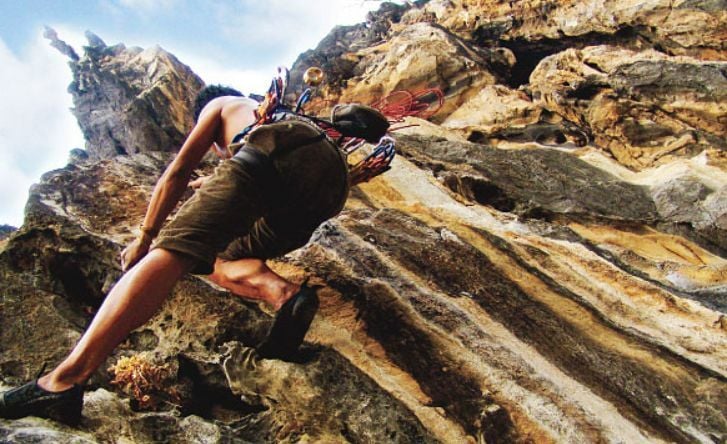Climbing new heights: Chiang Mai tourism to scale rock enthusiasts

Chiang Mai tourism operators are eager to market the province’s mountainous allure to tap into the global rock climbing community of 44.5 million enthusiasts, while also advocating for government support to promote this sport across various provinces to boost the tourism sector.
The acting president of the Tourism Council of Chiang Mai, Punlop Saejew, recently highlighted the rock climbing market’s potential to Prime Minister Srettha Thavisin during his visit to Chiang Mai.
Punlop emphasised that hosting a climbing championship in local destinations could generate at least 1 billion baht in revenue.
He referenced data from the International Federation of Sport Climbing (IFSC) which indicates that there are 10.4 million climbers in the United States. Americans rank fifth among foreign arrivals in Chiang Mai.
The IFSC organised a competition in 2019 in Vail, Colorado, attracting approximately 7,700 participants.
Participants and spectators of such competitions tend to stay for extended periods, with the average stay reaching 20 days per trip, comparable to the duration recorded during a FIFA World Cup. This long stay is essential for competitors to engage in intensive practice before the competition starts, which Saejew views as crucial for promoting tourism in second-tier cities.
Tourism in second-tier cities
“If the government wants to promote second-tier cities or less-crowded destinations, climbing matches the target perfectly, as every region has a mountain range suitable for this activity.”
In addition to Chiang Mai, other provinces with the potential for promoting rock climbing include Lampang, Krabi, Surat Thani, Trang, Phangnga, Nakhon Si Thammarat, Nakhon Ratchasima, Saraburi, Phetchaburi, Lop Buri, and Khon Kaen.
Chiang Mai’s Chai Prakan district, for example, hosts five of the ten deepest caves in Thailand, presenting significant opportunities for climbers, although these sites are not yet adequately promoted or developed.
In Mae On district, the local community is awaiting the local administration’s permission to reopen its renowned limestone cliff for climbers. This follows the Bangkok-born PM’s directive to local authorities to revive climbing sport tourism in the area.
The Crazy Horse Cliff, located near Muang On Cave, is a well-known attraction in the province, previously drew 3,000 to 5,000 climbers annually, generating 300 million baht for the province. Opened to the public in 2000, the site was closed in 2018 due to a legal dispute involving an official’s misconduct, said Saejew.
“Since the closure, local communities that regularly earned income from tourists have been significantly impacted.”
As Chiang Mai and other provinces seek to capitalise on their natural landscapes, the push for government support to develop and promote rock climbing destinations could significantly bolster local economies and attract a diverse array of tourists, reported Bangkok Post.
Latest Thailand News
Follow The Thaiger on Google News:


























